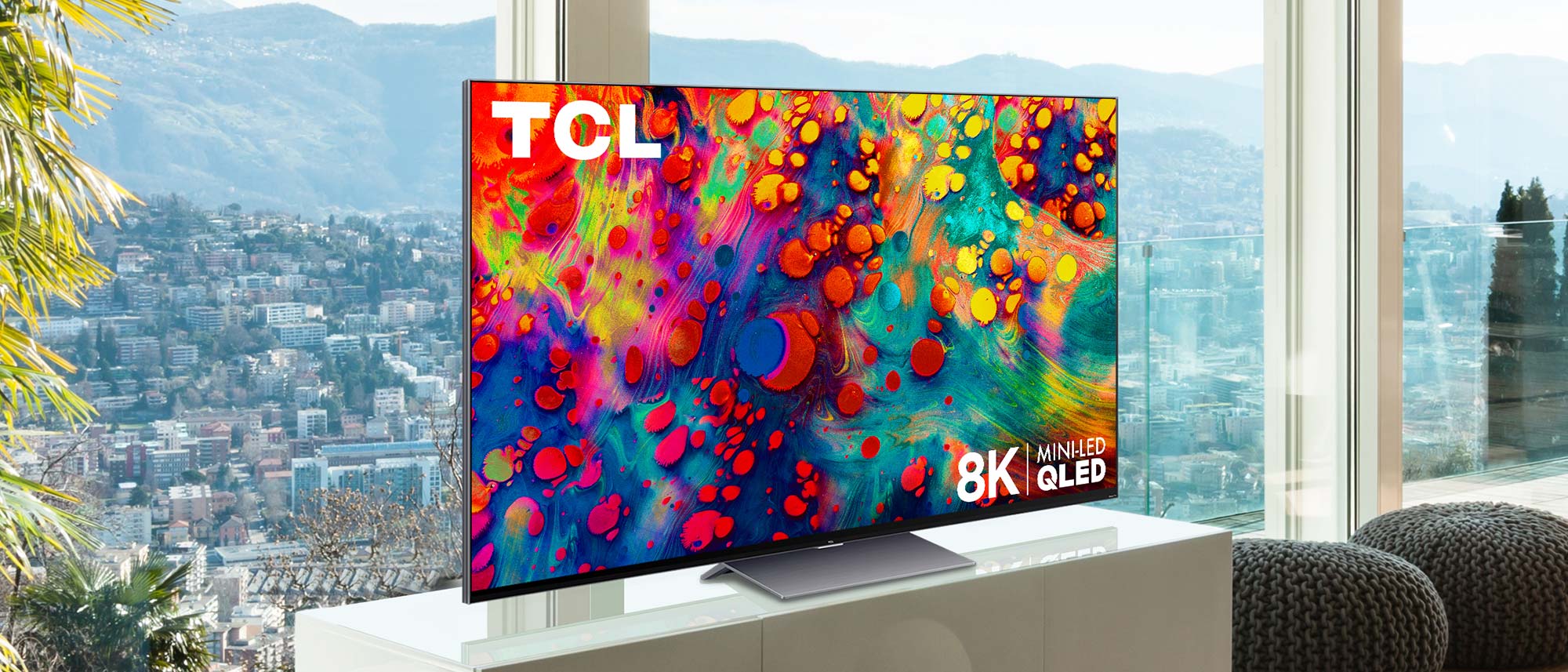Tom's Guide Verdict
The TCL Roku TV 6-Series 8K (R648) is a next-generation set at this generation’s prices, but it’s not a compelling buy while 4K reigns supreme.
Pros
- +
Technical picture quality is good
- +
Well-conceived remote redesign
- +
Fine gaming performance on consoles and PCs
Cons
- -
65-inch model struggles to prove worth of 8K resolution
- -
Very little 8K content available in the wild
- -
Poor off-angle viewing
- -
Mediocre sound
Why you can trust Tom's Guide
Price: $2,199.99
Model number: 65R648
Screen size: 65 inches
Resolution: 7,680 x 4,320
HDR: HDR10, HLG, Dolby Vision
Refresh rate: 120 Hz
Ports: 4 HDMI, 1 USB
Audio: 15W x 2, 30W subwoofer
Smart TV software: Roku TV
Size: 57 x 32.7 x 3 inches [w/o stand]
Weight: 70.1 pounds [w/o stand]
It takes a while for every captivating new technology to become commonplace enough for ordinary consumers to have regular exposure to it — and to be able to afford products that use it. The TCL Roku TV 6-Series 8K suggests that the company renowned for bringing good-looking sets to lower price ranges thinks 8K (at 7,680 x 4,320 pixels, four times the resolution of 4K) might have finally reached that point.
The TV itself makes that less obvious at the moment. It carries all the usual advantages of TCL models in terms of price and picture quality, but is hobbled by existing to showcase a technology that hasn’t had the time it needs to live, breathe, and influence the industry. This makes the TV itself a curiosity — particularly in its 65-inch incarnation — and not a terrific value prospect, even if you see the next big leap forward as more of an investment than a money pit.
Editor's Note: November 11, 2021 – TCL has just announced the first 8K streaming service, exclusive to TCL's 8K Roku TVs. It's an important step forward for 8K, and makes the TCL Roku TV 6-Series 8K (R648) a little more enticing than when we first reviewed it in July of 2021. Our rating remains unchanged, for now.
TCL Roku TV 6-Series 8K (R648): Price and availability
For our review, we assessed the 65-inch version of the TCL Roku TV 6-Series 8K, the 65R648. Because the other available model, the 75-inch 75R648, shares the same core features and underlying technologies, we expect the 65R648 and the 75R648 to be comparable in performance — if not necessarily viewing experience. (See the Performance section for more on this.)
TCL Roku TV 6-Series 8K (R648): Design
The Roku TV 6-Series 8K generally retains the thick, boxy look of previous entries in TCL’s 6-Series, with a few tweaks. The set measures 57 x 32.7 x 3 inches at its thickest, with the main portion of the screen itself slightly more than 1 inch deep.
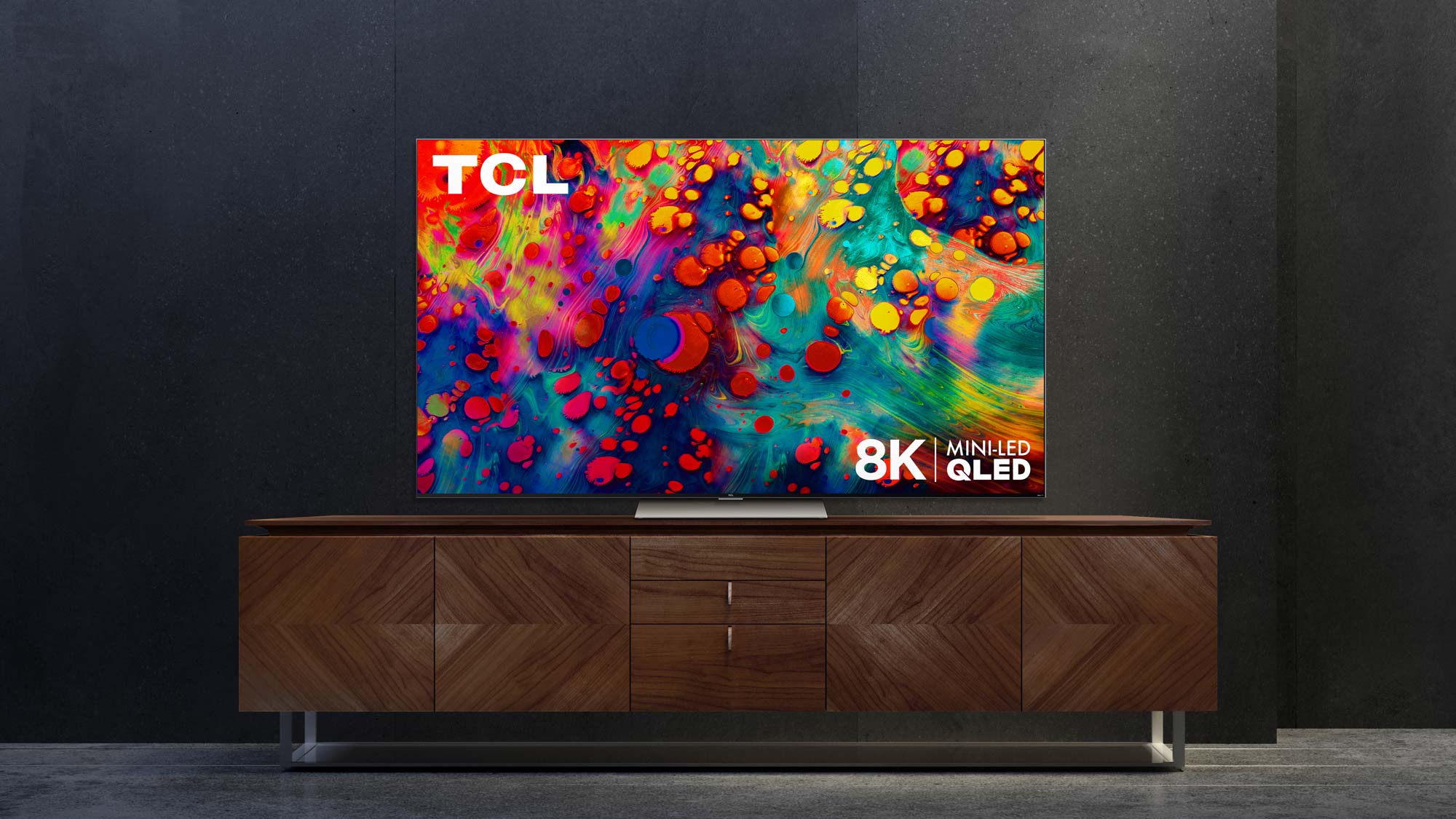
Its size and weight (just over 70 pounds) mean that you will need another person’s help to set it up safely. The brushed-metal bezel is thin on all sides except the bottom, where its half-inch width is big enough to accommodate the TCL and Roku TV logos; there are quarter-inch bands of black on the top, left, and right.
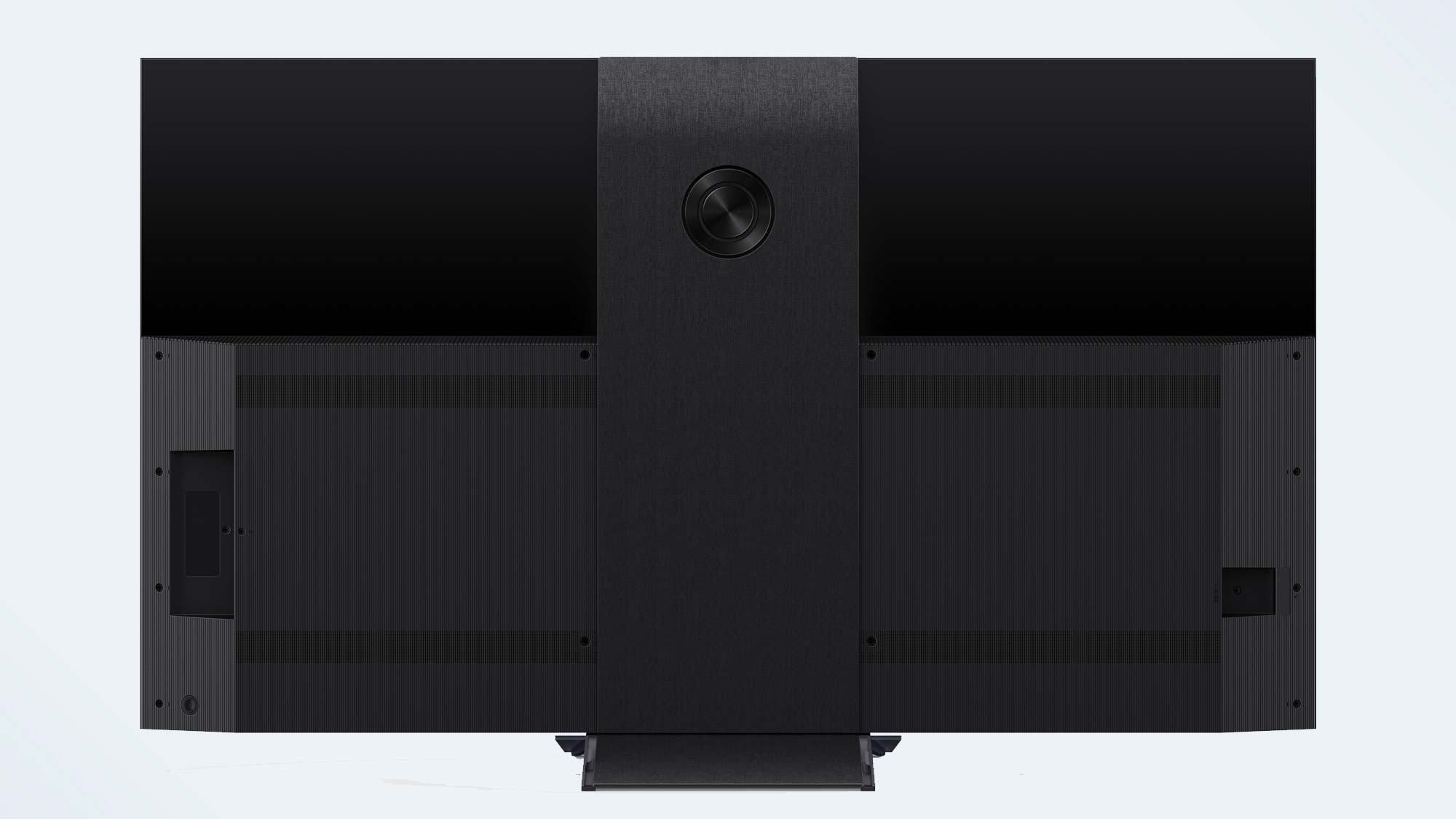
The back of the TV is all black, with the plastic compartment housing the set’s components sporting thin, vertical lines to mask the vents. A column in the center is all black, except for the two metal concentric circles that add some visual interest to the top-middle portion. The screw holes for the VESA mount frame that center column.

Should you prefer to place your TV on a table or entertainment center instead of on the wall, a wedge-shaped metal stand is included that easily connects to the bottom of the TV with four screws.
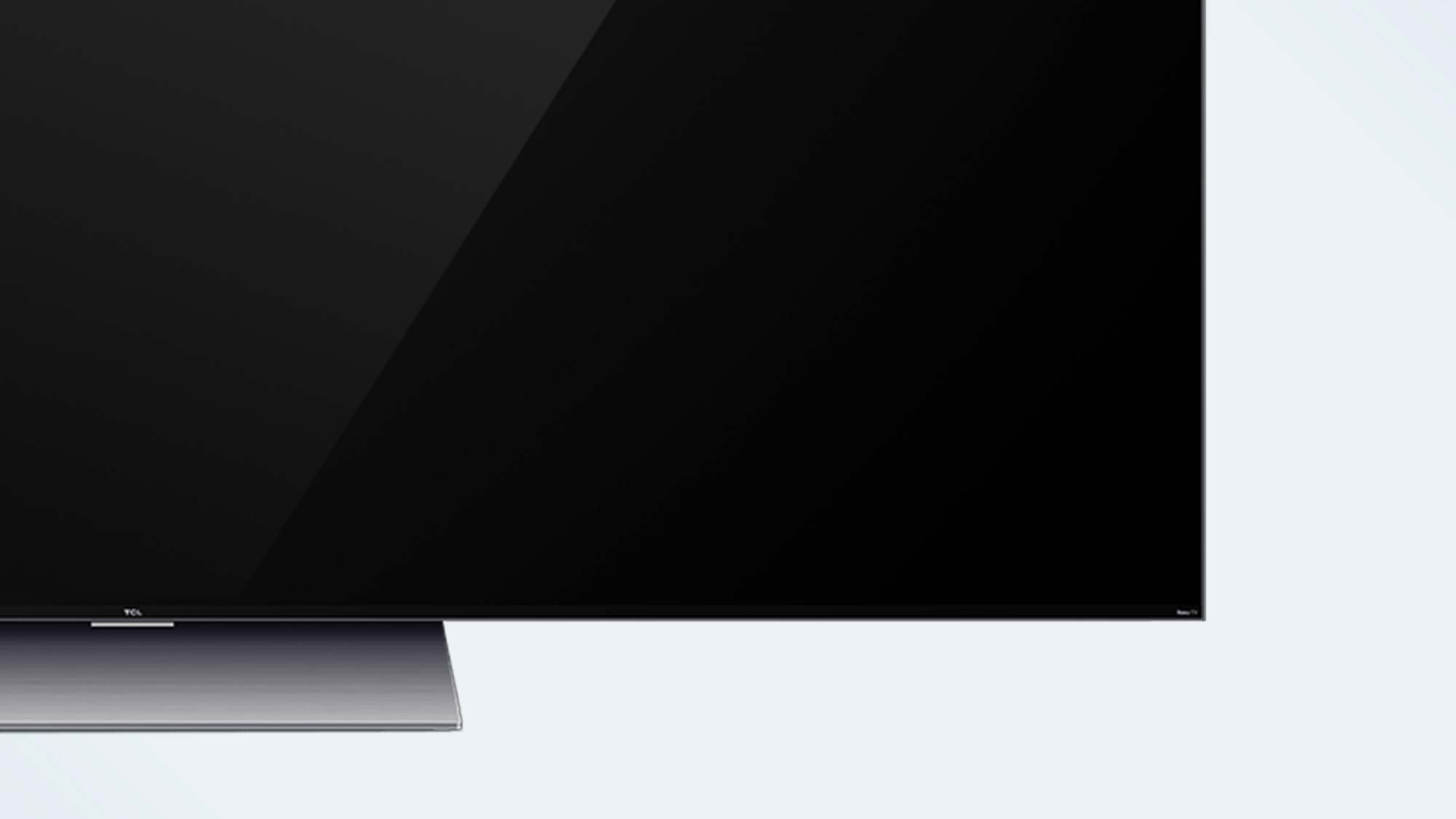
The attractive brushed-metal stand is heavy duty, measuring 18.9 x 7.8 in front of the TV when installed (and raising the screen about 2.5 inches), while built-in cable management channels on its back side help simplify the usually tedious process of keeping your media setup neat.
TCL Roku TV 6-Series 8K (R648): Ports
All the ports are easy to access, as they are all side positioned. The power port is on the left, and everything else is on the right: the Ethernet port, the pinhole Reset button, four HDMI ports, the coaxial cable connector, one USB 2.0 port, the headphone jack, and the optical audio out port. The large hardware Power button is positioned below them, in the lower-right corner.
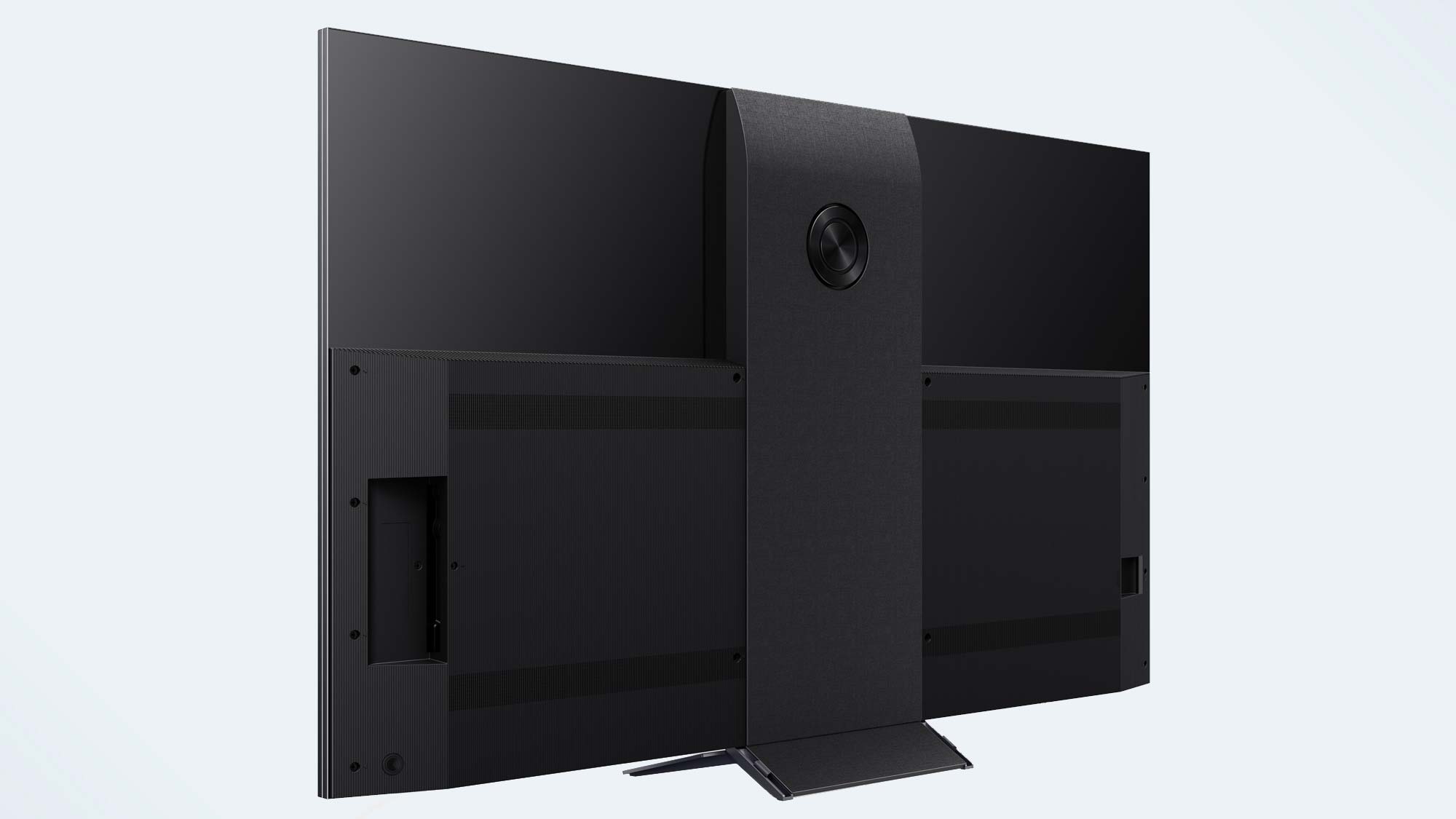
Only two of the HDMI ports support the HDMI 2.1 standard, which allows for next-generation technologies like 120 Hz refresh rates at 4K resolution, Variable Refresh Rate and Auto Low Latency Mode (ALLM), for automatically switching over to gaming settings when you activate your console. Because the ports are not labeled, figuring out which uses which standard requires some trial and error. At least the port supporting eARC and ARC is marked as such.
As HDMI 2.1 becomes more prevalent in the industry, hopefully TCL will follow the lead of companies such as LG, which on its recent models has equipped all its HDMI ports with the newer, more powerful standard.
TCL Roku TV 6-Series 8K (R648): Test results
Among the offerings TCL highlights on the Roku TV 6-Series 8K line are the mini-LED backlighting and Contrast Control Zones for upping the contrast across the whole picture, in addition to the quantum dot (aka QLED) technology we’ve seen on previous models from TCL and Samsung. What do these mean as far as what appears on the screen?
For testing TVs, we use two pattern generators (an AccuPel DVG-5000 for SDR and a SpectraCal VideoForge Pro for HDR), the X-Rite i1 Pro spectrophotometer and the SpectraCal C6 colorimeter for display measurements, and Portrait Displays’ Calman calibration software.
In both Normal and Movie SDR modes, the R648 covered 99.8% or more of the Rec. 709 color gamut, which was just behind that of last year’s TCL 6-Series Roku TV 55R635 in Standard mode (99.86% versus 99.92) and more clearly ahead in Movie mode (99.79% versus 99.08%). The R648 outstripped it in color fidelity, too, using the Delta-E measurement (which specifies the difference between the transmitted color and what appears on the screen): 2.12 versus 2.85 (with lower numbers being better). The new set was superior in brightness, too, with its brightest mode registering 621 nits as opposed to the 594 nits of the earlier model.
Although OLED sets tend to deliver superior performance across the board, the R648 does what many TCL TVs do: punch above its weight relative to price.
TCL Roku TV 6-Series 8K (R648): Performance
For the time being, there are two key questions to consider with respect to 8K video performance: How does the set look when upscaling from lower resolutions, and how does it look when playing native 8K content? For the R648, let’s take them one at a time.
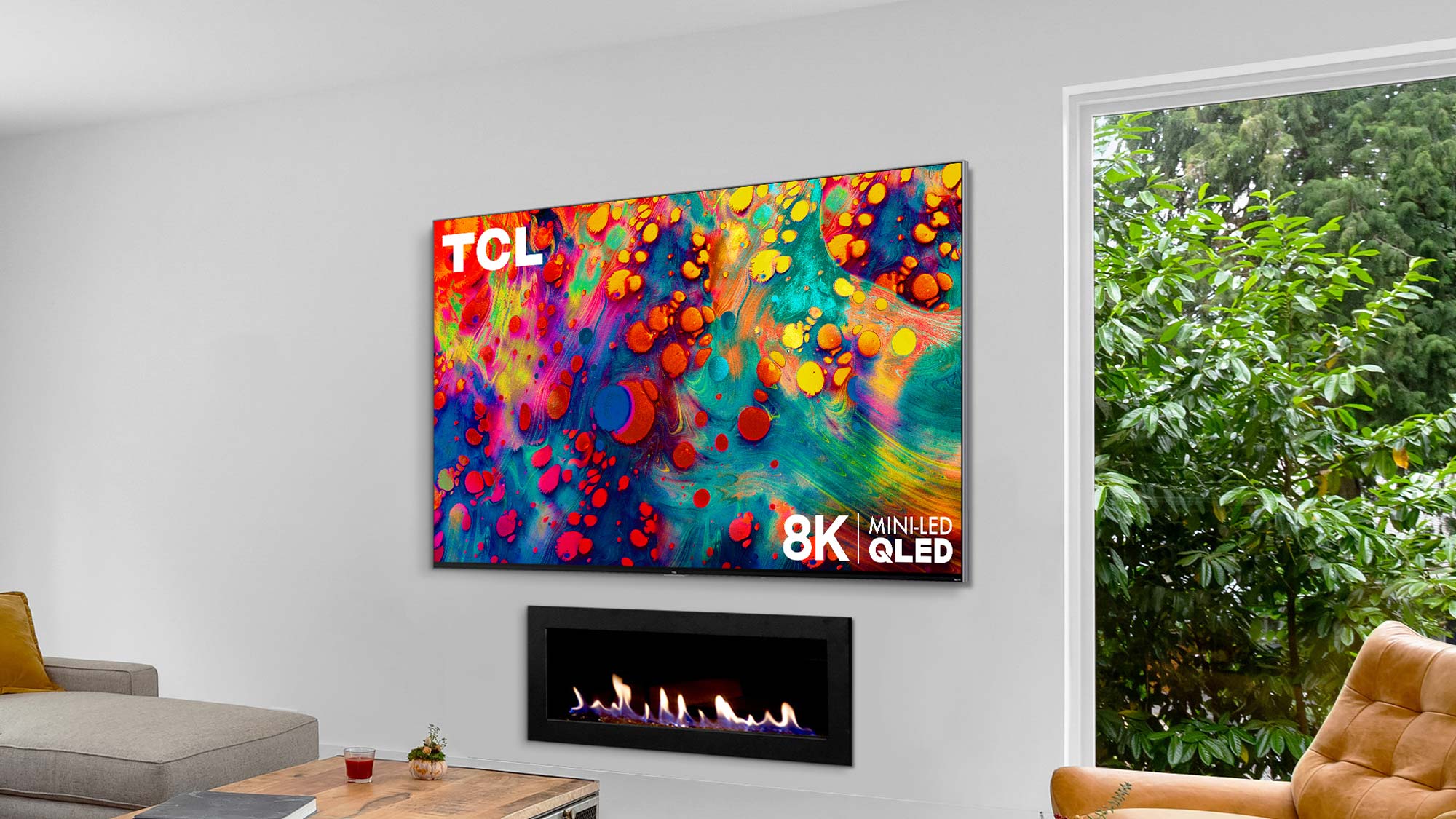
As far as the first question is concerned: not too bad. It maintained both the sharpness of edge and the starkness of contrast so necessary to the early farmhouse scene in Blade Runner 2049. It attractively conveyed all the dazzling earth hyper-tones of the Italian Riviera, and the sparkling blues and greens of the underwater scenes in the new Disney-Pixar animated film Luca. Zack Snyder’s Justice League retained its apparently intended sense of color-sapped, two-dimensional “cartooniness” with the aggressive popping of its contrast-bombing special effects. The lightning-streaked final battle between Rey and Palpatine in Star Wars; The Rise of Skywalker lacked a bit of the oomph we’ve seen on other TVs; the swirling festival on Pasaana bordered on the garish in both the Normal and Bright Dolby Vision modes, but passed muster in Dark.
In all cases, these 4K-rendered movies looked acceptably sharp when observed from a standard viewing distance (eight to ten feet from the screen). Softer edges were visible in these titles only when looking at them from far closer than any human being ever should, so you don’t have to worry about all your 4K movies being visually “obsolete” in 8K any time soon.
Upscaling from 1080p, however, was another matter. In almost everything we tested, the fuzziness was conspicuous and distracting. Coming off best was Mission: Impossible — Fallout, though even that evinced a loss of the richness that make that action film look so immediate at lower resolutions. Most other videos shot in HD looked straight bad, as if shot in wrinkle-obscuring soft focus.
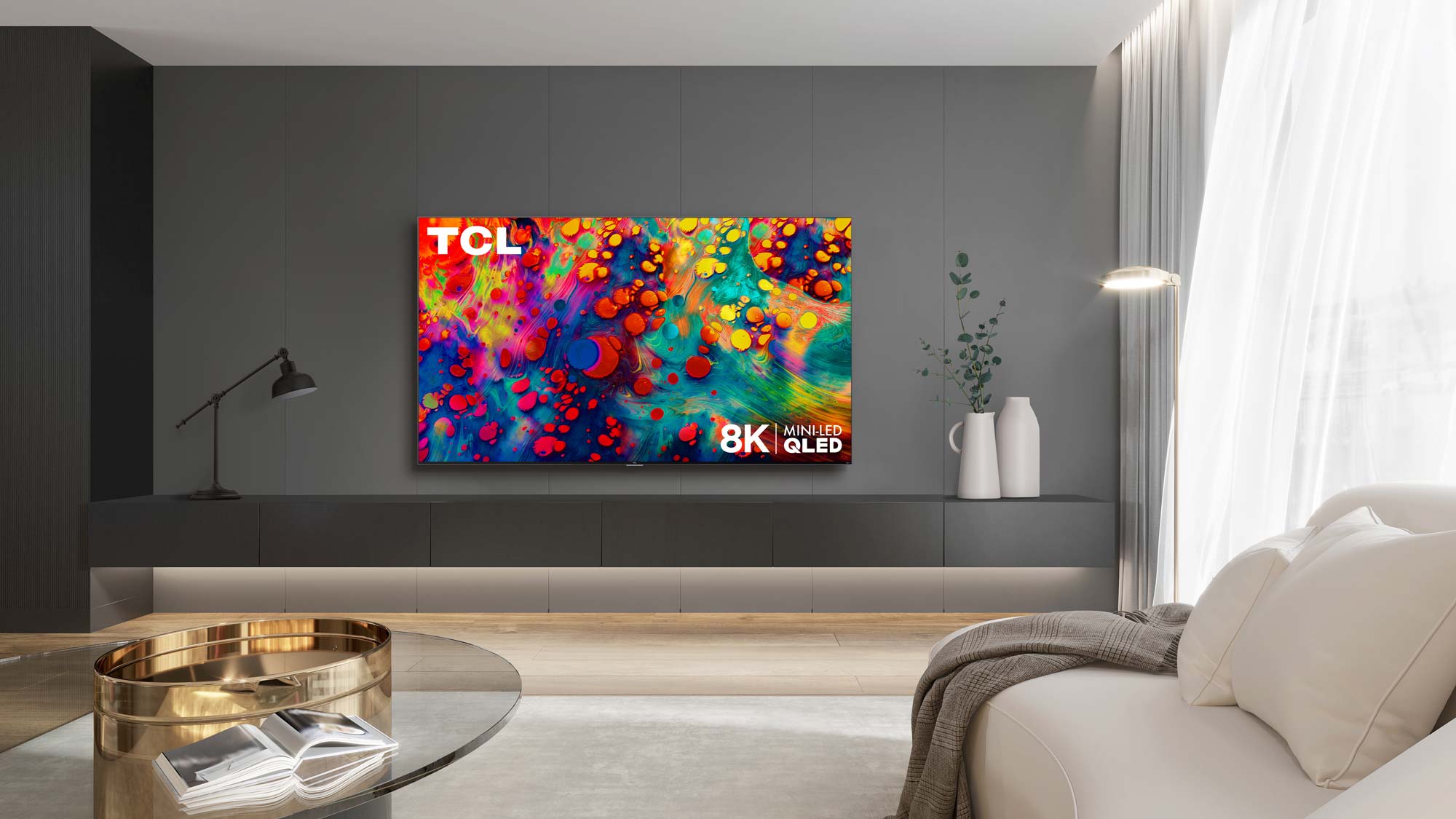
Don’t forget that 8K is 16 times the resolution of 1080p, so all of this is, on some level, to be expected. Let your living and entertainment circumstances guide you: If a large chunk of your movie library is in 1080p, and if you’re forced to sit fairly close to your set, 8K may just not be right for you at this time.
Then there’s native 8K content. Disclaimer: We’re seriously hobbled by the current dearth of it, so we didn’t have an extensive collection of movies to sift through; we were mainly limited to YouTube nature and tourism videos. No, these aren’t genuinely representative of what you’re likely to watch, but they’re good for showing off what the resolution means. Even from a standard viewing distance, we could make out single strands of fur on animals or the individual bricks on a Swiss windmill, and the bustling nighttime Manhattan cityscape came alive in all its twinkling glory just as it does when you’re padding through the streets of the City That Never Sleeps.
Comparing the 65R648 side-by-side against another 65-inch TV we’ve recently reviewed, the 4K Sony Bravia XR A80J, painted a different picture. The exact same videos, looked at this way, appeared almost identical, and in a couple of cases, the A80J actually looked fuller and cleaner. This isn’t a huge shock; cramming a lot more pixels into the same amount of space means they’ll be small enough for the nuances to evaporate before you get too far away from the screen. This is why a lot of premium 8K sets are 75 or 85 inches, bigger than even most 4K TVs: It’s a lot easier to see what you’re getting, regardless of where you’re sitting.
In fairness, the A80J is also a higher-end 4K TV and the 65R648 comes with a bleeding-edge premium, so they’re not really directly competitive. But it’s nonetheless an important reminder that not all TVs are equal, content is key, and the built-in limitations of, well, optics are always in play. Pixels blending from far enough away isn’t a bad thing, per se (just ask Georges Seurat), but it doesn’t help in making a compelling argument for a “smaller” 8K TV at this moment in the technology’s life cycle.
One thing that’s true of the R648 at every resolution: Its off-angle viewing leaves a great deal to be desired. Colors are drained of most of their vibrancy well before you reach the corner of the set, and once you’re at or past that, forget it. The summery peaches and reds of Luca’s face flattened into colors you’d expect to find on a sun-bleached poster; and the color version of Zack Snyder’s Justice League, which already laughs in the face of saturation, becomes barely a half-step removed from the black-and-white “Justice Is Gray Edition” when viewed from anywhere other than straight on. If anything, full-screen color tests were even worse: At the corners, an all-orange screen became lemon yellow, cyan turned pastel green, and violet was a violent magenta. Solid red, green, and blue fared the best, but that’s not high praise for a large television.
TCL Roku TV 6-Series 8K (R648): Gaming
If one area makes an open-and-shut case for 8K today, it’s gaming — but even that’s not caveat-free. The TCL Roku TV 6-Series 8K sets are the first at this resolution to support THX Certified Game Mode, which meets certain benchmarks for color, speed, image clarity, and more. As previously mentioned, two of the R648’s HDMI ports support the gaming-friendly HDMI 2.1 standard, and firing up our Xbox Series X showed that nearly all of its capabilities are met by this set. And when it comes to input lag, it just surpasses our threshold of 20 milliseconds for smooth gameplay, with 19.3 ms as measured with the older 1080p Leo Bodnar Signal Lag Tester and 14.6 ms when measured with a newer model designed for higher-resolution sets.
As with 1080p video, older games are iffy; Assassin’s Creed Odyssey was passable, but looked smudged and fake. But last year’s Assassin’s Creed Valhalla, optimized for more modern hardware, had the crisper, realer look we craved; even with all the details turned up, the 120 Hz refresh rate ensured smooth movement of the lead character, Eivor, in action at various levels of intensity. We can’t yet report on how native 8K console games would play, but based on what we’ve seen here, we’re not too worried.
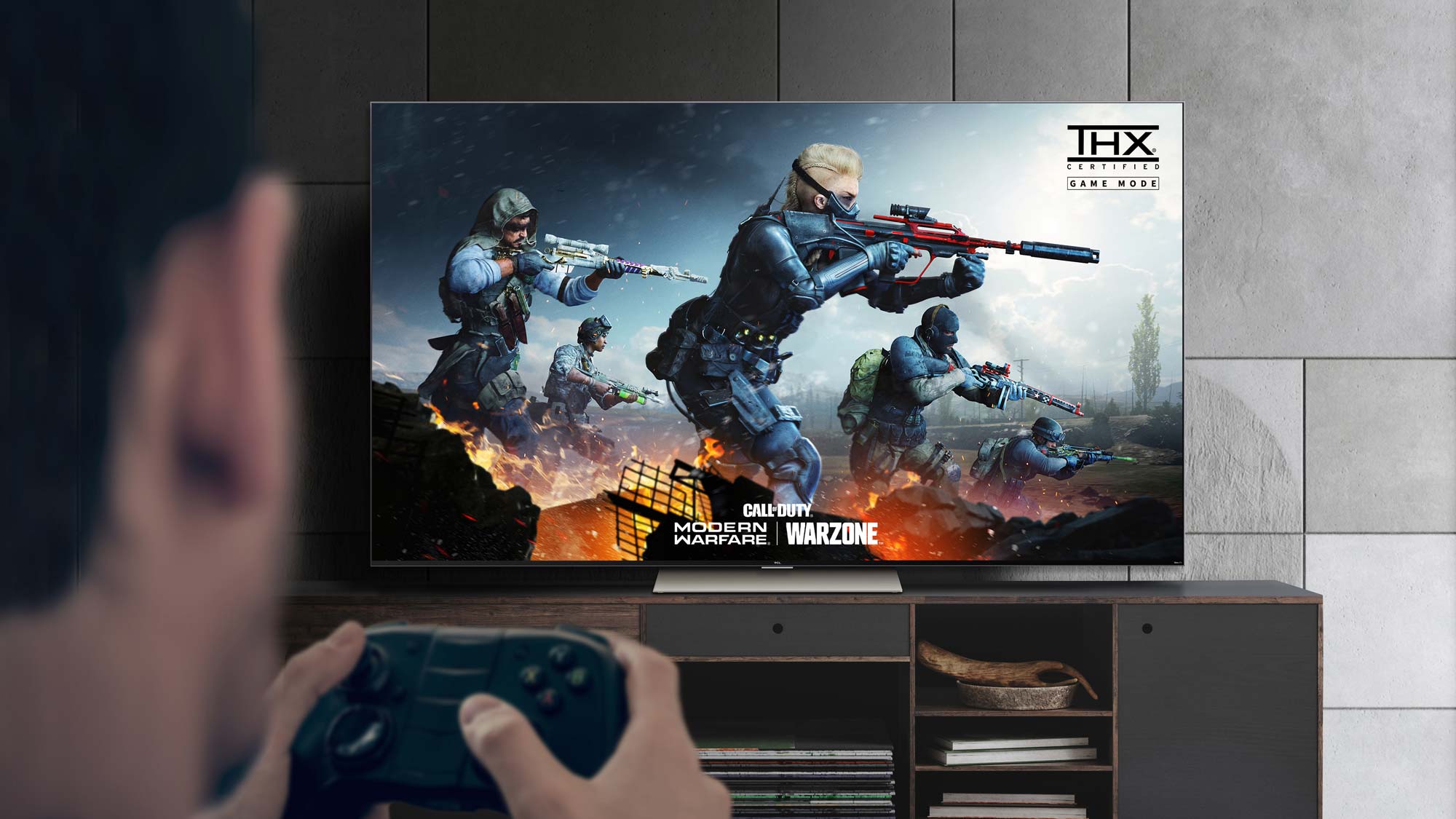
But the R648 did allow us to test 8K PC games, and this may have come the closest to converting us. We tried three titles — Metro Exodus Enhanced Edition, Assassin’s Creed Valhalla, and DiRT 5 — and they all looked terrific, with the combination of the TV’s size and resolution providing the next level of immersive experience that smaller monitors are not always able to realize.
Here, though, we faced a different bottleneck: PC performance. Our test system was a gaming desktop with a 10-core, 20-thread Intel Core i9-10850K processor; 32GB of RAM; and, most crucially, an Nvidia RTX 3090 graphics card — not just the gold standard for 8K gaming today, but pretty much the only standard. The card, with its sky-high 24GB of video memory, could handle the stress, but even it could only do so much. With the graphical details maxed out in every case, frame rates hit a low ceiling: on Metro Exodus Enhanced Edition, 23.1 fps for the High benchmark preset, 18 for Ultra, and 11.5 for Extreme; on Assassin’s Creed Valhalla, 25 fps; and on DiRT 5, 27.6 fps; remember, 30 fps is typically considered the bare minimum for a smooth experience. And this is the same system that, at 4K, turned out frame rates on the same tests of 69.9, 55.5, 36.6, 64, and 75.2 fps, respectively. Yes, you’re getting a huge gaming playground with 8K, but the performance you have to sacrifice may not be worth it — and if you have a lesser video card, you’re just wasting your time unless you want to dial back the visuals (maybe a lot).
That’s not all you’re giving up, either. Nvidia lists its version of the RTX 3090 at $1,499, which is high enough, but thanks to the global shortage, the least expensive one available at Newegg is $2,739, and Amazon’s lowest is $2,724. If you don’t already have this card, you’ll probably want to wait to expand your PC gaming into the 8K realm when doing so is more realistic.
TCL Roku TV 6-Series 8K (R648): Audio
Whether you prefer watching movies or playing games, you want a TV’s audio to be top-notch, and, similar to other TCL sets, the R648’s isn’t. With its two 15-watt speakers, movies, music, and games alike sounded blown out even at lower parts of the set’s volume range, and metallic distortion became increasingly evident the higher it was cranked. Soprano vocals came across as shrill with that setup, slightly clipping and sounding roundly unpleasant. The TV’s problems with layering sound were especially noticeable with dialogue, which got swallowed up if anything else was happening at the same time. (We tried multiple sound modes, and experienced these issues to some degree or another in all of them.)
Interestingly, the 30-watt subwoofer contributed to tolerable bass presence, as evidenced by the relentless thumping of The Knife’s “Silent Shout,” and it took until about the volume midpoint to lose its luster. That’s something, but if audio is really critical for your TV-watching enjoyment, pair this TV with one of the options in Tom’s Guide roundup of the best soundbars.
TCL Roku TV 6-Series 8K (R648): Smart features
As its full name implies, the R648 uses the familiar Roku TV interface. A scrolling menu on the side highlights the available choices, which include “Featured Free” (no-cost TV shows and movies); “My Feed” (your customizable video stream); movie, TV, and channel stores; Search; and Home, which provides instant access to your installed content channels, live TV (if you use it), and whatever other devices you have connected via HDMI. (At the time of writing, another option was “2020 Tokyo Olympics,” which provided a one-glance medal breakdown alongside a link to watch daily highlights or live coverage with the proper subscription — a fun addition.)
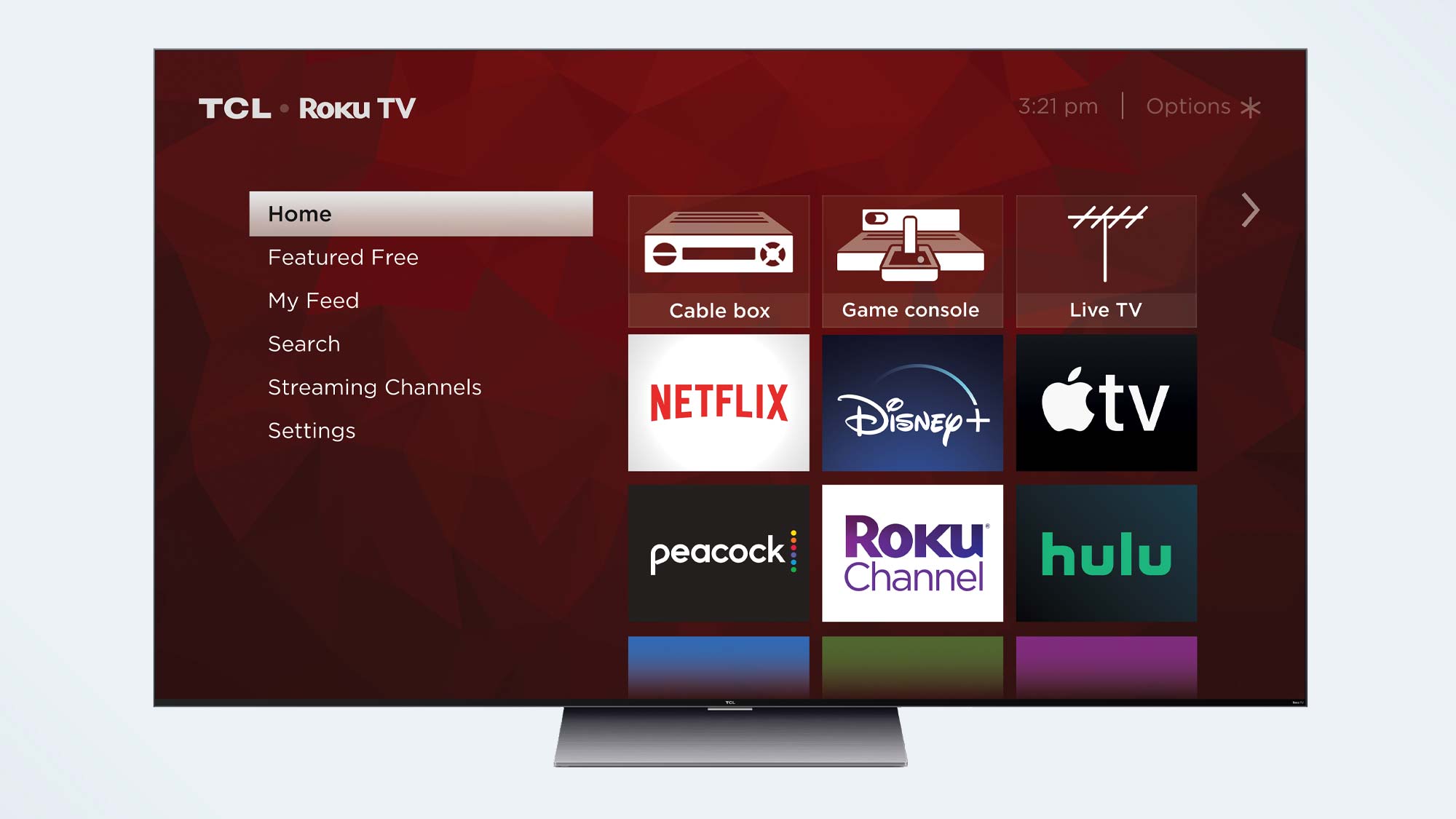
Roku TV is quick to learn and easy to use, but it lacks the depth and breadth of functionality that characterize the best smart TV systems, such as Google TV. There’s not much wrong with it now that its app selection has expanded to include such necessities as Apple TV+ and Disney+, but it’s starting to look simplistic and dated compared with the more advanced offerings found on other sets.
TCL Roku TV 6-Series 8K (R648): Remote control
The Roku TV remote, on the other hand, has received a major update — and it’s a welcome change. Replacing the tiny, squat black one that’s been all but universal for years is a sleeker silver-and-gray model that’s easier to hold and more comfortable to use. It measures about 7.3 by 1.6 inches, with all the buttons in the top three-fifths or so; the blank bottom section slides open to reveal the battery compartment. The main buttons are round, decently sized, and easy to press, as is the navigation wheel and its central OK button; only the buttons that access dedicated streaming channels (Netflix, Disney+, Apple TV+, and Hulu) are oblong in shape, so you’re unlikely to hit anything accidentally in the dark.
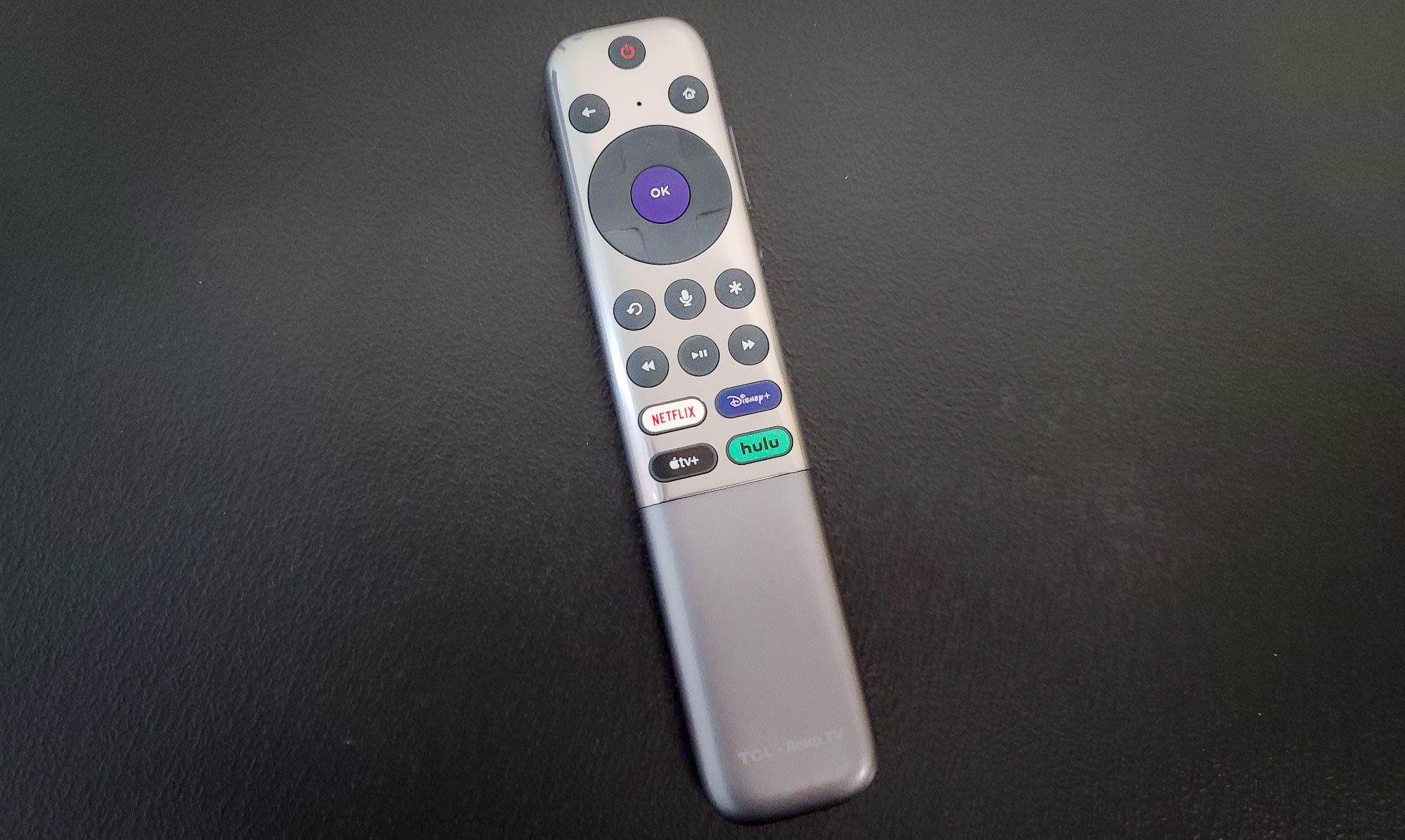
Another option is the new Roku Voice Remote Pro ($29.99, sold separately), which looks and feels a lot more like the traditional Roku remote but which offers improved voice controls. A hands-free switch lets you issue voice commands without first having to depress the microphone button (though it’s still there to use even if you turn off the hands-free mode). There are also two new programmable personal shortcut buttons, and a built-in headphone jack lets you listen to the TV silently. Plus, if you misplace the remote (which, let’s face it, you eventually will), you can say “Hey Roku, where’s my remote?” to get help in tracking it down.
These are fun capabilities, no doubt, and if your preferred method of interacting with your TV is by voice, this is an upgrade that’s worth having. (It should work with any Roku TV, too — not just this one.) Personally, I prefer the size and shape of the redesigned included remote, and it’s too bad the new voice features aren’t standard on it.
TCL Roku TV 6-Series 8K (R648): Verdict
However much we may want to pretend otherwise, we don’t yet live in an 8K world. Heck, with so many worthwhile videos (on YouTube and the streaming services) that are still coming out in 1080p, and internet bandwidth rather less than affordably maximized at many locations in the U.S., it’s likely to be years before we get there. My colleague, Tom’s Guide TV Editor Brian Westover, suggests we’re a decade away; I’m more bullish, and think that the speed of 4K adoption and the constant improvement in internet speeds puts it closer to five (with 8K videos worth watching hitting even before that), but its status as the de facto industry standard is not merely around the next corner. And as good as gaming on an 8K TV can be, PC hardware needs to go up in performance and down in price before that becomes wise, either.
All that said, the TCL Roku TV 6-Series 8K (R648) might be worth it if it were a killer performer in its own right. The sound, which aspires to the average but doesn’t always get there, and the aging smart TV interface are sticking points, and the benefits of 8K are literally and figuratively hard to see on the 65-inch model we tested. All this gets in the way of its fine color and brightness, solid design, and nice new remote — the things that do make this TV worth considering.
The problem is, you can get all this and more in a 4K set that costs the same and will still be a viable, even enviable, choice for years to come. Considering the prices of most consumer models, it’s understandable why early adopters would want an 8K TV just to say they have the next, big thing. But although it’s currently hard to find a cheaper 8K set than the TCL Roku TV 6-Series 8K (R648), it’s all too easy to find a better 4K model — and most viewers will find they don’t miss those extra few million pixels that much, if at all.
Matthew Murray is the head of testing for Future, coordinating and conducting product testing at Tom’s Guide and other Future publications. He has previously covered technology and performance arts for multiple publications, edited numerous books, and worked as a theatre critic for more than 16 years.
